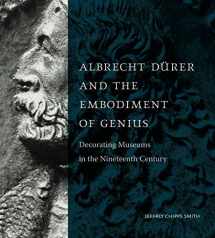
Albrecht Dürer and the Embodiment of Genius: Decorating Museums in the Nineteenth Century
Book details
Summary
Description
During the nineteenth century, Albrecht Dürer's art, piety, and personal character were held up as models to inspire contemporary artists and--it was hoped--to return Germany to international artistic eminence. In this book, Jeffrey Chipps Smith explores Dürer's complex posthumous reception during the great century of museum building in Europe, with a particular focus on the artist's role as a creative and moral exemplar for German artists and museum visitors.
In an era when museums were emerging as symbols of civic, regional, and national identity, dozens of new national, princely, and civic museums began to feature portraits of Dürer in their elaborate decorative programs embellishing the facades, grand staircases, galleries, and ceremonial spaces. Most of these arose in Germany and Austria, though examples can be seen as far away as St. Petersburg, Stockholm, London, and New York City. Probing the cultural, political, and educational aspirations and rivalries of these museums and their patrons, Smith traces how Dürer was painted, sculpted, and prominently placed to accommodate the era's diverse needs and aspirations. He investigates what these portraits can tell us about the rise of a distinct canon of famous Renaissance and Baroque artists--addressing the question of why Dürer was so often paired with Raphael, who was considered to embody the greatness of Italian art--and why, with the rise of German nationalism, Hans Holbein the Younger often replaced Raphael as Dürer's partner.
Accessibly written and comprehensive in scope, this book sheds new light on museum building in the nineteenth century and the rise of art history as a discipline. It will appeal to specialists in nineteenth-century and early modern art, the history of museums and collecting, and art historiography.


We would LOVE it if you could help us and other readers by reviewing the book
Book review



